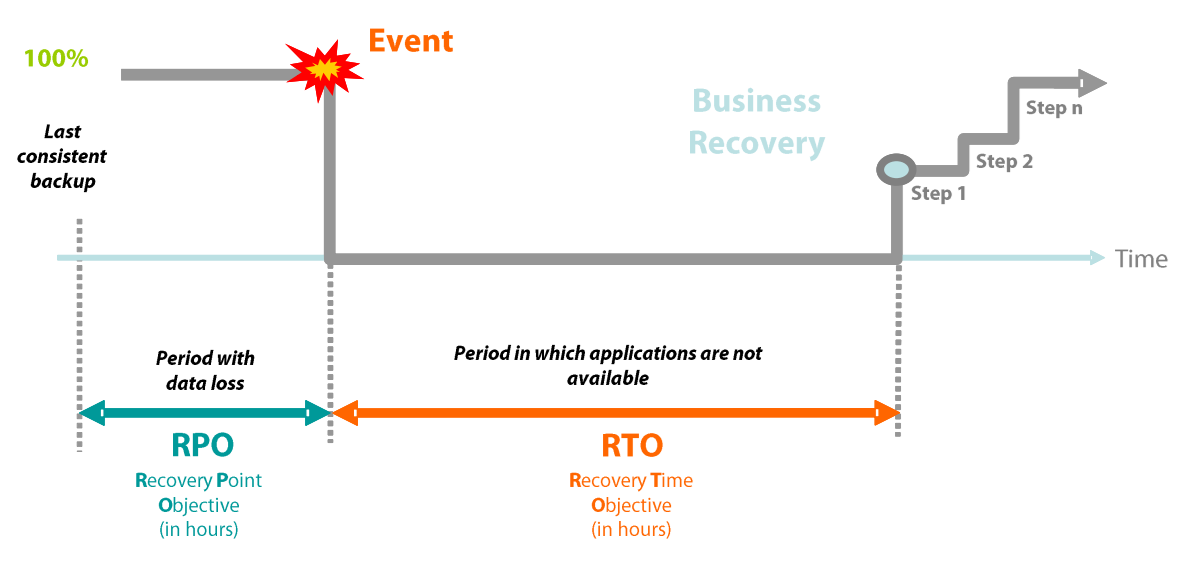Business continuity management
Business Continuity Management (BCM) addresses the failure/interruption of critical business processes. The key resources to safeguard in BCM include but are not limited to: Data, hardware and software, personnel, services, products and infrastructure. BCM entails several closely related activities, such as disaster recovery, emergency management, incident management, and contingency planning. Effective BCM reduces the residual risks in connection with significant disruptions.
Development of a crisis (Source: SBA)
Governance
The organisational structure and response to significant disruptions, as well as strategic crisis planning, are defined.
Business Impact
A Business Impact Analysis (BIA) identifies critical business processes and assesses the potential impact of disruption to the business.
Business Continuity
Business Continuity Planning (BCP) outlines the essential procedures, recovery options, and alternative resources required to ensure the continuity and recovery of critical processes.
Disaster Recovery
Disaster Recovery Planning (DRP) outlines the recovery processes to achieve recovery goals in the event of catastrophic failure or destruction of ICT, while considering the potential loss of key personnel.
It is considered best practice to maintain a business continuity system to manage disruptive events such as cyber-attacks and business interruptions. Osmond helps its clients to establish a BCM framework to comply with regulatory (FINMA) and industry (ISO 22301, BSI 200-4) requirements.
We’re here to help!
Contact Us
Thank you for contacting us.
We will get back to you as soon as possible.
Oops, there was an error sending your message.
Please try again later.
Copyright Osmond GmbH, 2025 / Privacy





